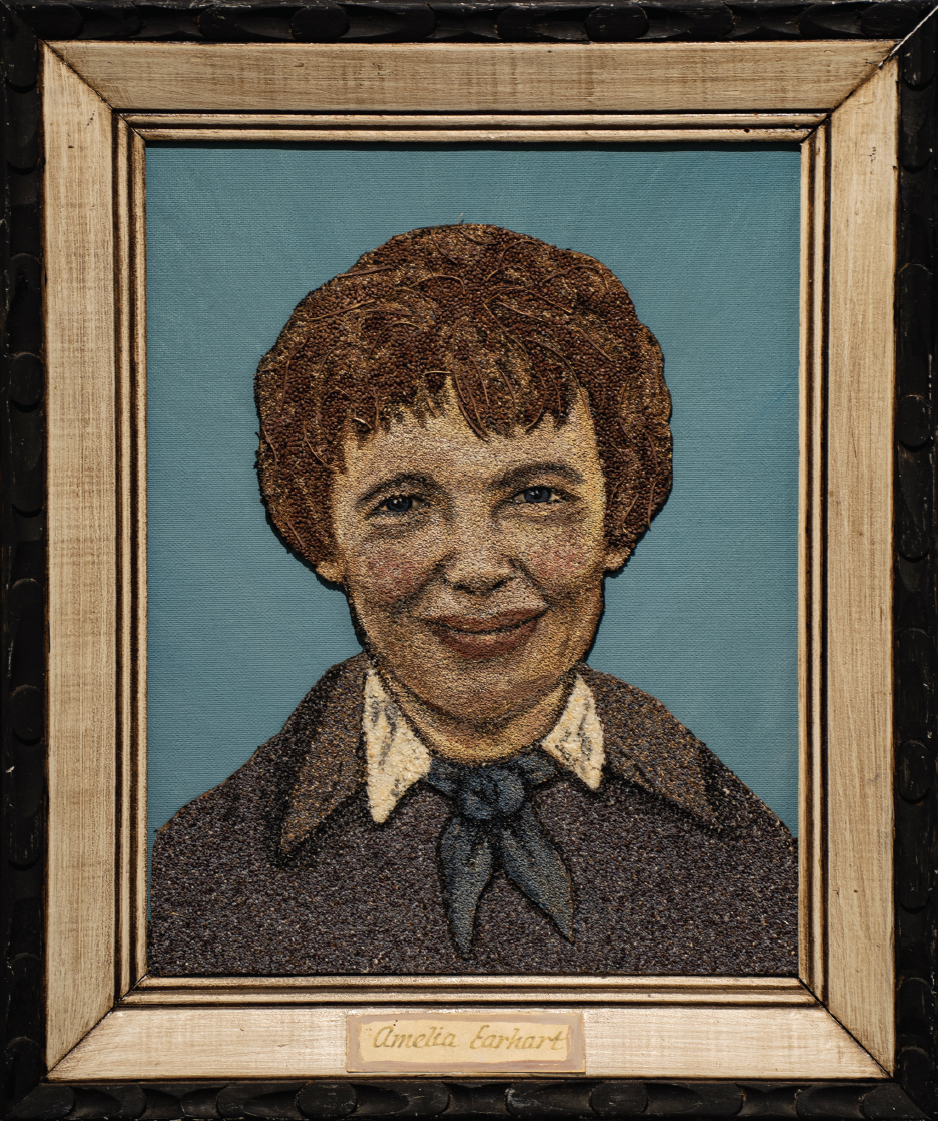Lillian Colton:
Amelia Earhart, 1996seed; timothy, birds-foot trefoil, grits, poppy seed, wheat spear on cardboard mounted to painted canvas
Plains Art Museum purchase
resources:
“A Remembrance of the Seed Lady,” Minnesota Public Radio
Seed Queen: The Story of Crop Art and Amazing Lillian Colton, Colleen Sheehy

Lillian Colton (1911 - 2007) was a crop artist whose artistic practice involved elements of the land like rice, hay, and seeds glued to board. Crop or seed artists use agricultural material as an artist’s medium. Colton’s work, which usually featured prominent public figures, became a staple of the Minnesota State Fair for several decades. She was so prominent, in fact, that she was known as the “Seed Queen,” and was inducted into the State Fair Hall of Fame. Colton was born on a farm outside Sherburn, Minnesota, and was the owner of Cinderella Clip ’n’ Curl in Owatonna for 67 years. In 2004, in an interview for a solo exhibition at the Minneapolis Institute of Art, Colton described how her profession and her art intersected:
“After I graduated from high school I took up beauty work . . . I just loved the feel of the hair and the styles that the women had. When I started doing crop art, the seeds would lend themselves to the contours of the waves in the hairstyle. And also the beards too . . . you could use salsify and rome grass or wild rice to get the different shading in the beards. I chose Abraham Lincoln and men with long beards because I liked the feel of the seeds as I was making my portrait.”The knowledge her career gave her of facial features and bone structure, cultivated alongside a stylist’s eye toward popular magazines’ photographic portraiture, granted Colton a set of skills that enabled the uncanny realism of her work -- and ultimately revolutionized the entire crop art field. These influences converged in her prize-winning 1969 portrait of Richard Nixon, which broke ground on two fronts; first, as a portrait, in a moment when most crop art depicted animals, landscapes, and still lifes; and, secondly, through the work’s engagement with mass media representations, which set the piece unexpectedly alongside pop art.
The piece included in this exhibition, a portrait of famous American aviator Amelia Earhart, which competed in the Minnesota State Fair’s Crop Art Competition in 1996. The Minnesota State Fair has the only crop/seed art competition known to exist, a feature that has been in place since 1965; Colton won 9 Blue Ribbons in the competition between 1966 and 1983, and in 1984 chose to, instead, lead crop art demonstrations at the Fair to give other artists a chance at the top prize.
︎︎︎return to exhibition artists
︎︎︎further information at Plains Art Museum